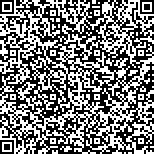| 引用本文: | 魏亚南,石了,张敏,赵艳蛟,陈永法.基于国家药品编码本位码数据库的中国儿童用药可获得性现状调查研究[J].中国现代应用药学,2024,41(8):1119-1126. |
| WEI Yanan,SHI Liao,ZHANG Min,ZHAO Yanjiao,CHEN Yongfa.Investigation on Current Availability of Pediatric Drugs in China Based on National Drug Coding Database[J].Chin J Mod Appl Pharm(中国现代应用药学),2024,41(8):1119-1126. |
|
| |
|
|
| 本文已被:浏览 898次 下载 686次 |

码上扫一扫! |
|
|
| 基于国家药品编码本位码数据库的中国儿童用药可获得性现状调查研究 |
|
魏亚南1, 石了1, 张敏1, 赵艳蛟1,2,3,4, 陈永法1,2,3,4
|
|
1.中国药科大学国际医药商学院, 南京 211198;2.中国药科大学国家药物政策与医药产业经济研究中心, 南京 211198;3.中国药科大学国家药品监督管理局药品监管科学研究基地, 南京 211198;4.中国药科大学国家药品监督管理局药品监管创新与评价重点实验室, 南京 211198
|
|
| 摘要: |
| 目的 定量分析中国儿童用药可获得性现状,为优化儿童用药可及性激励政策提供基础数据支撑。方法 基于国家药品监督管理局发布的药品编码本位码数据库,通过批准文号信息查阅药品说明书,将已上市药品划分为儿童专用药、成人儿童共用药、儿童推断可用药和非儿童药4类,重点研究儿童专用药与成人儿童共用药,从批文、品种、剂型、规格、治疗领域分布以及生产企业等角度对中国儿童用药上市现状开展数据统计与分析。结果 儿童专用药有4 229条批准文号,占已上市药品批文总数的2.99%;成人儿童共用药有44 112条批准文号,占已上市药品批文总数的31.19%。儿童专用药有625个品种,占儿童用药品种总数的18.83%。镇痛、解热、抗炎、抗风湿、抗痛风药占儿童专用药(化药和生物制品,不含疫苗)批文总数的55.71%,化痰、止咳、平喘剂占儿童专用药(中成药)批文总数的26.71%,但儿童专用药化药和生物制品(不含疫苗)有16个治疗领域、中成药有19个治疗领域的批文数均不足该类批文总数的1.00%。口服液体剂型占口服给药剂型的21.46%,而片剂、胶囊剂、丸剂等口服固体制剂占37.51%。近十年国产药品的上市情况中,调节水、电解质及酸碱平衡药、镇痛、解热、抗炎、抗风湿、抗痛风药和呼吸系统用药合计占儿童专用药(化药和生物制品,不含疫苗)批文数目的64.29%,内科用药(化痰、止咳、平喘剂和解表剂、清热剂)合计占儿童专用药(中成药)批文数目的61.70%。结论 中国儿童用药上市产品虽已有一定基础,但儿童专用药较少。各治疗领域儿童用药可获得性差异明显,部分治疗领域供应不足,部分治疗领域则供应过剩,大部分领域较难满足儿童人群的用药需求,儿童专用药的研发生产依然集中于传统强势领域。 |
| 关键词: 国家药品编码本位码数据库 儿童用药 儿童专用药 可获得性 |
| DOI:10.13748/j.cnki.issn1007-7693.20230721 |
| 分类号:R969.3 |
| 基金项目: |
|
| Investigation on Current Availability of Pediatric Drugs in China Based on National Drug Coding Database |
|
WEI Yanan1, SHI Liao1, ZHANG Min1, ZHAO Yanjiao1,2,3,4, CHEN Yongfa1,2,3,4
|
|
1.China Pharmaceutical University, School of International Pharmaceutical Business, Nanjing 211198, China;2.China Pharmaceutical University, The Research Center of National Drug Policy & Ecosystem, Nanjing 211198, China;3.China Pharmaceutical University, Research Base for Drug Regulatory Science, National Medical Products Administration, Nanjing 211198, China;4.China Pharmaceutical University, Key Laboratory of Drug Regulatory Innovation and Evaluation, National Medical Products Administration, Nanjing 211198, China
|
| Abstract: |
| OBJECTIVE To analyse current availability of pediatric drugs in China quantitatively and provide fundamental data support for optimizing the incentive policy. METHODS Based on national drug coding database issued by National Medical Products Administration, the marketed drugs were classified into children's only drug, adult-children's drug, children's inferred drug and non-children's drug by consulting the drug instructions through the approval number. Taking children's only drug and adult-children's drug as the key subjects, this paper carried out statistics and analysis on the marketing status of pediatric drugs in China from the perspectives of approval, variety, dosage form, specification, distribution of treatment fields, enterprise and so on. RESULTS Among the marketed drugs, there were 4 229 approvals for pediatric drugs and 44 112 approvals for adult-children's drugs, accounting for 2.99% and 31.19% respectively. children's only drug had 625 varieties, accounting for 18.83% of the total pediatric drug varieties. Analgesic, antipyretic, anti-inflammatory, anti-rheumatic and anti-gout drugs accounted for 55.71% of the total approvals for children's only drug(chemicals and biologics, excluding vaccines), and expectorant, antitussive and antiasthmatic agents accounted for 26.71% of total approvals for children's only drug (traditional Chinese medicine), but there were 16 and 19 treatment fields respectively were <1.00%; among the oral dosage forms, oral liquid accounted for 21.46%, while tablet, capsule, pill and other oral solid accounted for 37.51%. In the last 10 years of domestic drugs on the market, the number of approvals for regulation of water, electrolytes and acid-base balance drugs, analgesic, antipyretic, anti-inflammatory, anti-rheumatic, anti-gout drugs and respiratory drugs accounted for 64.29% of children's only drug(chemicals and biologics, excluding vaccines), the number of approvals for internal medicine-expectorant, antitussive, antiasthmatic agent, exterior-relieving agent and heat-clearing agent accounted for 61.70% of children's only drug(traditional Chinese medicine). CONCLUSION There has been a certain basis for the marketing of pediatric drugs in China, but children's only drugs are few overall. The availability of pediatric drugs varies significantly among treatment fields. Some fields are in short supply, while others are in excess supply. Most fields are difficult to meet the drug demand of children, and the R&D and production of children's only drug is still concentrated on traditionally strong fields. |
| Key words: National Drug Coding Database pediatric drugs children's only drug availability |
|
|
|
|
